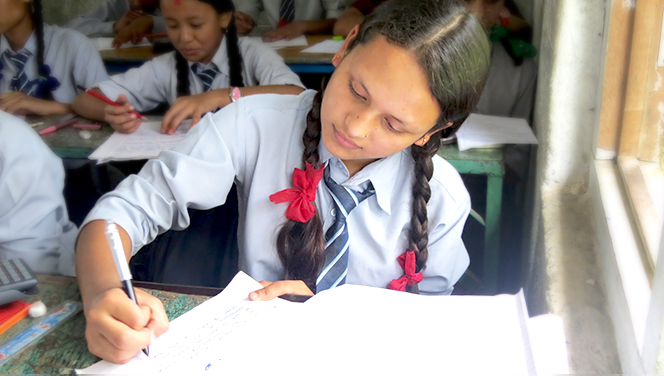Authorities of Kathmandu District Administrative Office and Dakshinkali Municipality decided to restart in-person classes in all schools of the district from September 6. The schools were mostly shut down from April 2020 (the schools were briefly opened from March 1 to April 15, 2021). The concerned authorities elected to start in-person classes on the condition that all students and teachers wear face masks all the time, use sanitizer and maintain social distance.
This development brings both joy and concerns to the parents of the school children. Most of the parents are happy that their children will get education after a gap of 18 months. This is especially true for the parents of government schools where online schooling was virtually non-existent. At the same time, the majority of the parents are worried that the in-person class in the schools might increase the risk of contracting COVID infection among the children.

This same concern is shared by the Nepali health experts as well. They fear that the risk of COVID has not yet subsided and the health protocols proposed by the authorities like wearing mask all the time and maintaining social distance is difficult to implement in most of the school districts of Kathmandu. They fear that crowded class rooms will be the number one risk factor for the children and teachers in potentially contracting COVID.
There are close to 20 schools (including private, community based and pre-schools) in Pharping region, which is a part of Dakshinkali municipality, and all of these schools have promptly started the in-person classes. The risk of a cluster infection in these schools are high as the student crowd size does not match the classroom size in most of the schools. In addition, other safety measures such as frequent hand-washing or using sanitizer are difficult to enforce. The other risk factor of the reopening of the school is that the students will be carriers of the virus and they may spread the virus to their households and subsequently to the community.

We have observed that the current pandemic has widened the gap to the access of education. The students with online education were not affected by the school closure. In fact, they may have benefitted more by online education which uses the latest technology. On the other hand, the students without these advantages have lost two years of schooling.
This is why we have always advocated for the development of online schooling for the disadvantaged students in the Pharping region. We must provide all necessary tools like devices, internet access and training to achieve this goal. Instead of just hastily opening the schools, we must also plan on how to provide online education. Only then we can be safer and bridge the gap of access to education during the current and future pandemics.

- Aftermath of 2023 Earthquake and Lending a Helping Hand - November 23, 2023
- Sowing the Seeds of Empowerment through Sewing - July 30, 2023
- Vaccinating students from COVID is the boost we need in Nepal - January 30, 2022
- Re-opening Act: To be or not to be in school in person - September 29, 2021
- A Gasp of Hope in the Fight Against COVID-19 - August 31, 2021

